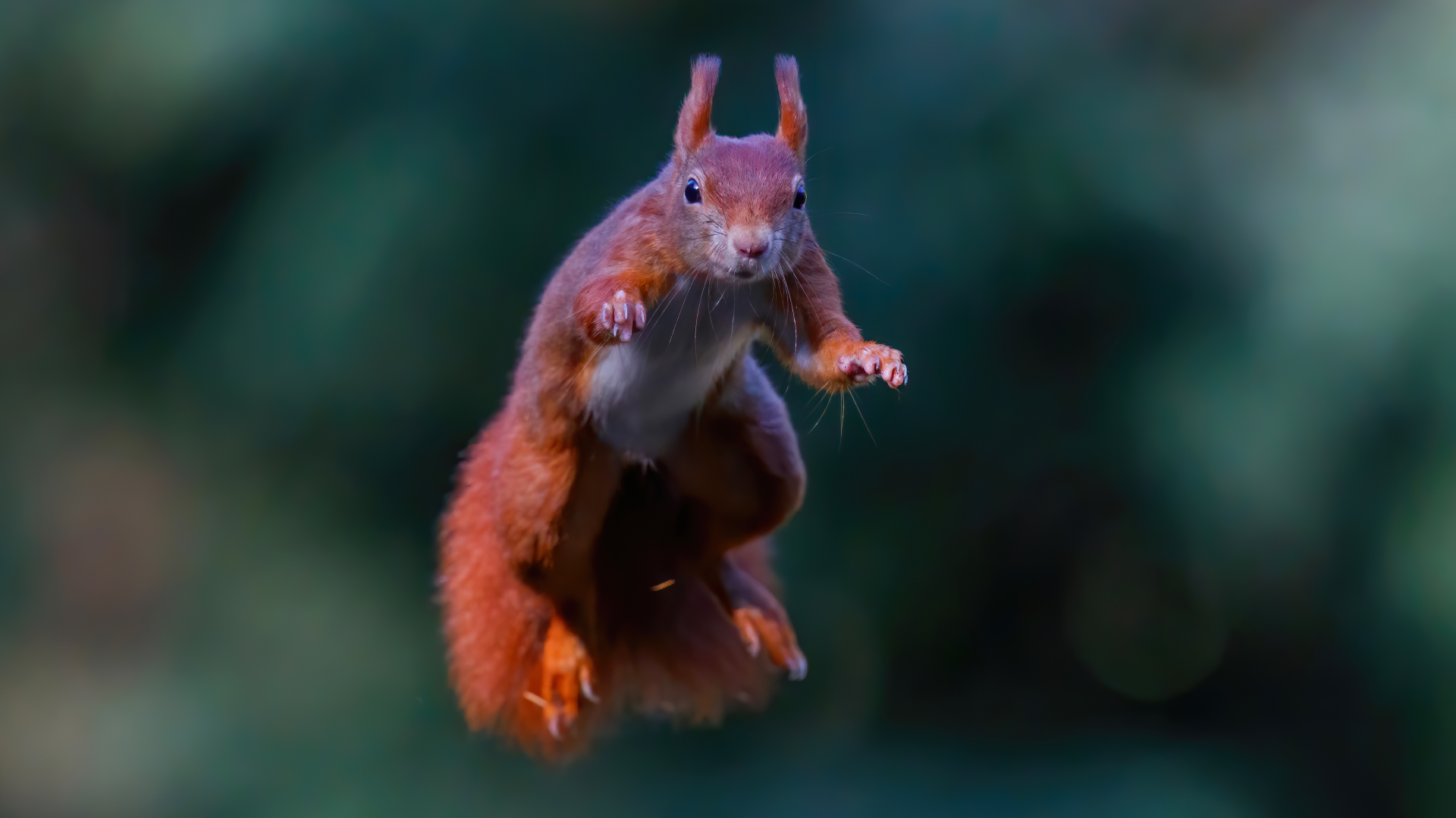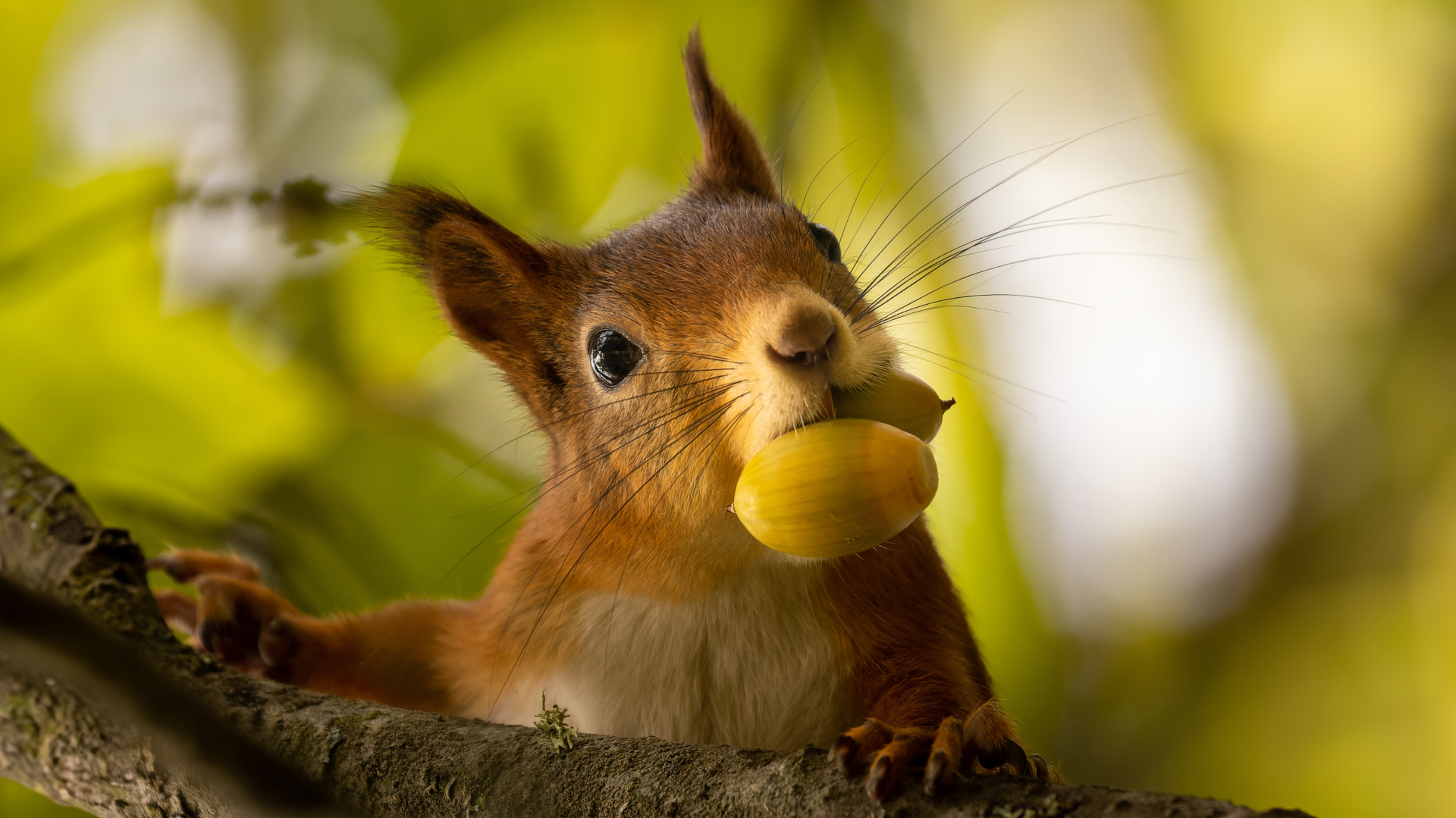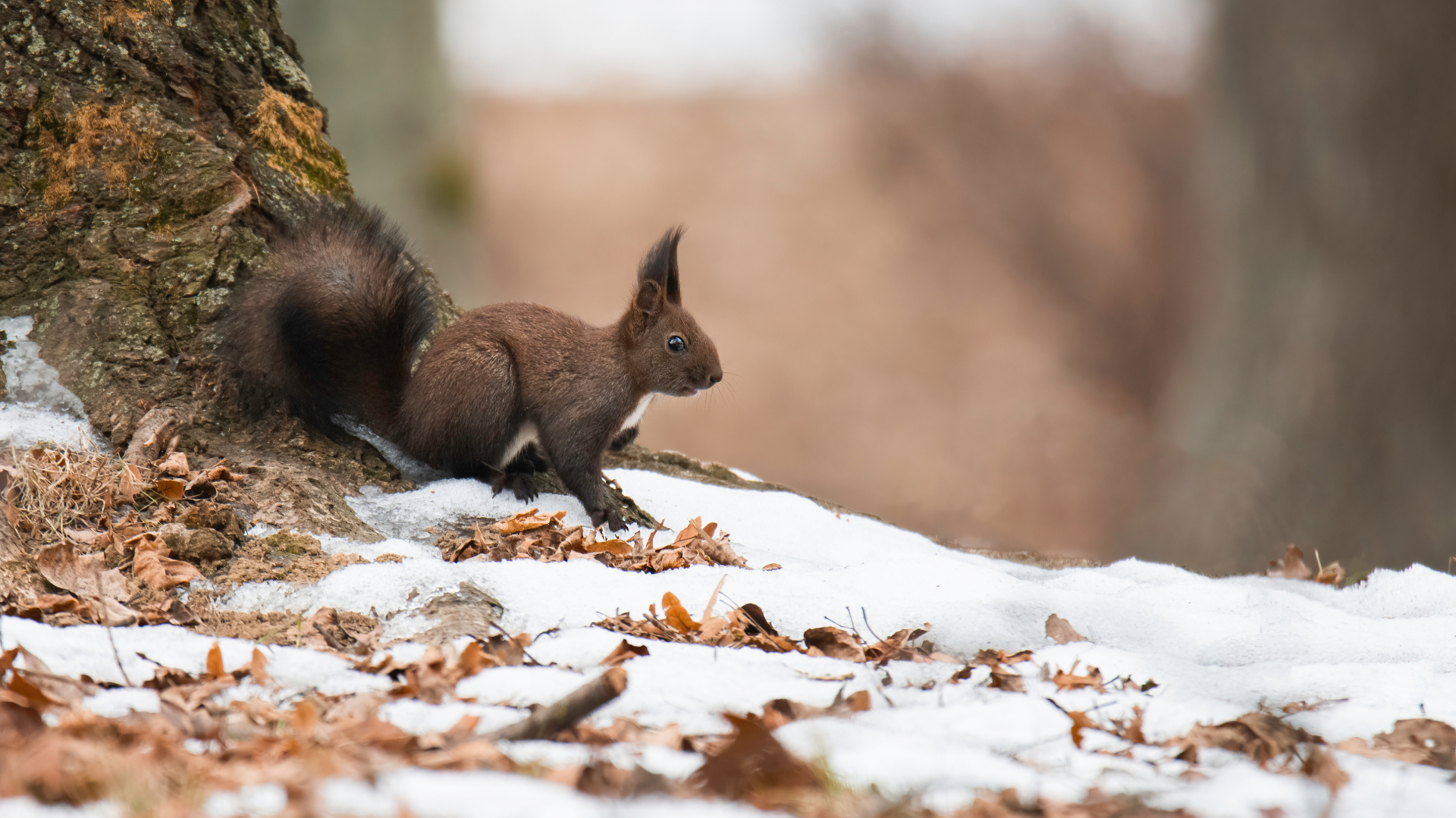If, as you strolled through the forests of northern and central Portugal, you think you saw a red-headed figure leaping between the branches, you were not mistaken. The protagonist of this display of dexterity and colour is the red squirrel (Sciurus vulgaris), a charming and agile inhabitant of Portuguese forests. Learn more here.
With an almost mischievous expression, the red squirrel has bright eyes and pointed ears, displaying a tuft of long hair in the winter. It is easily recognisable, but the name of this species may deceive. It has a fluffy, normally red-brown coat, but its shades can also vary between dark brown, grey and black, depending on the season of the year or the place where it lives. The belly, lighter than the rest of the body, is usually white.
With a body that can measure up to 25 centimetres and an additional 20-centimetre tail, it’s hard not to notice its most distinctive trait – the tail. This authentic work of art is large, fluffy, thick and brush-shaped, helping it balance in bold jumps and working as a true “blanket” on colder nights. Sciurus vulgaris is a charming inhabitant and agile arboreal acrobat of Portuguese forests.






